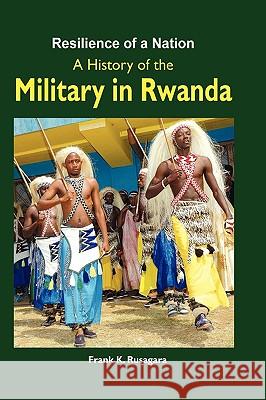Resilience of a Nation. A History of the Military in Rwanda » książka
Resilience of a Nation. A History of the Military in Rwanda
ISBN-13: 9789970190010 / Angielski / Miękka / 2009 / 244 str.
Rwanda is believed to have emerged around the tenth or eleventh century under King Gihanga, the founder of the prosperous and sovereign nation. Initially, military structures played more of a social role, with their main concern being the preservation of the means of subsistence, other than securing territorial influence. King Gihangas military formations, for instance, were meant for the security of his family and his economic assets. It is the aim of Resilience of a Nation: A History of the Military in Rwanda to examine the role that the military has played throughout the history of Rwanda to date. We look at the different phases the Rwandan military has undergone, from the traditional, the colonial and immediate post-independence military to the present. It is the premise of this book that, not precluding any political expediencies, it is the military that played the most central sociopolitical role in what became of Rwanda during its heydays when no slave trader could tread its soil, to its lowest moment during the 1994 genocide. It is also the military that led the way in re uniting a shattered people and the country to becoming a democratic state of reputable international standing. It takes stock of the history that led to the rise of the Inyenzi guerrilla movement in the 1960s, and then the Rwanda Patriotic Front and Army in the late 1980s and early 1990s, leading to the pragmatism of the current Rwanda Defense Forces (RDF). Borrowing from the Ingabo zu Rwanda of old, the RDF today not only ensures security for all, but provides a model of national unity and integration that continues to inform Rwandas socio-political and economic development.











